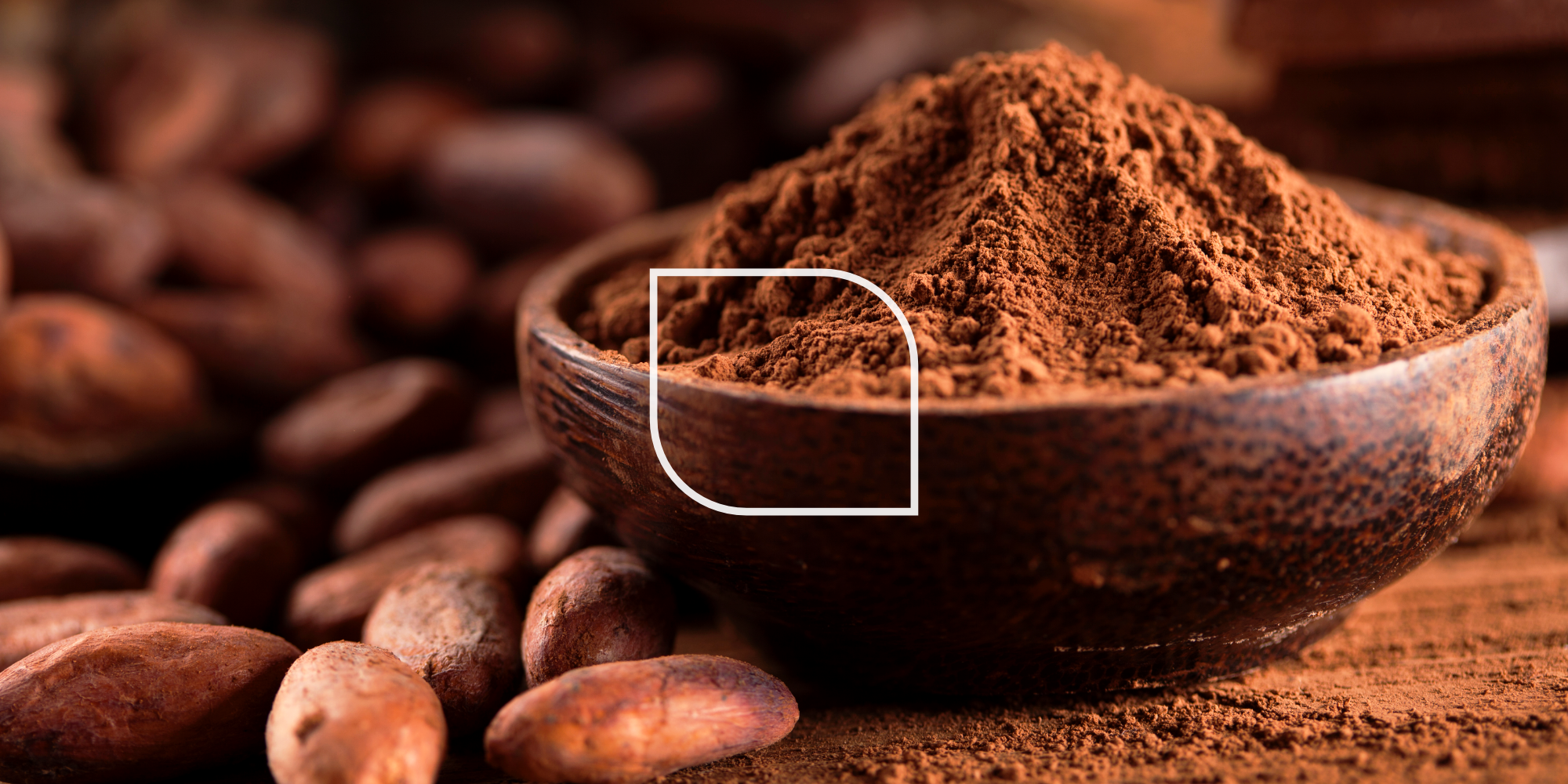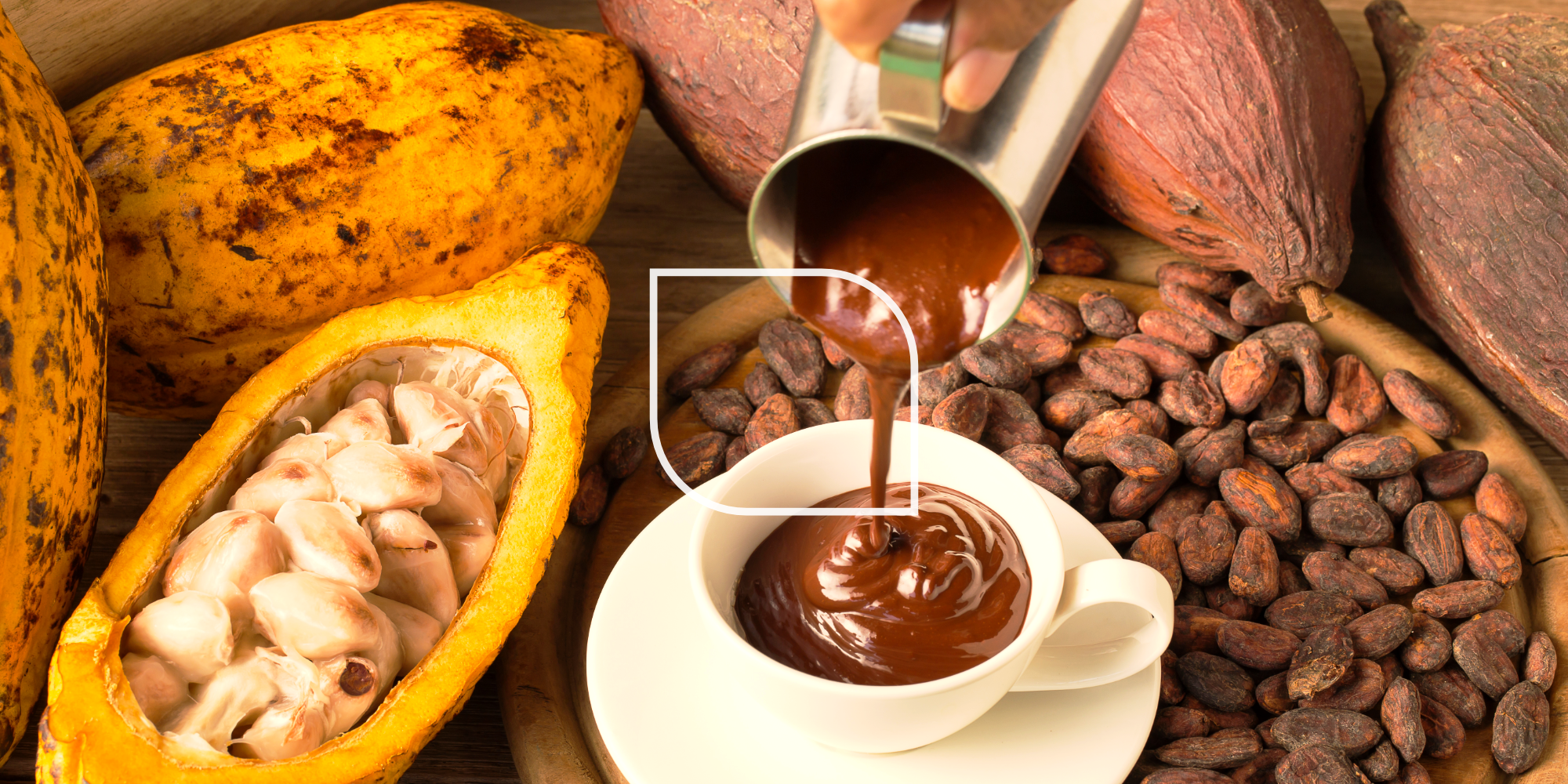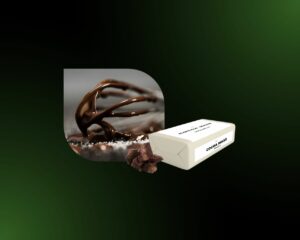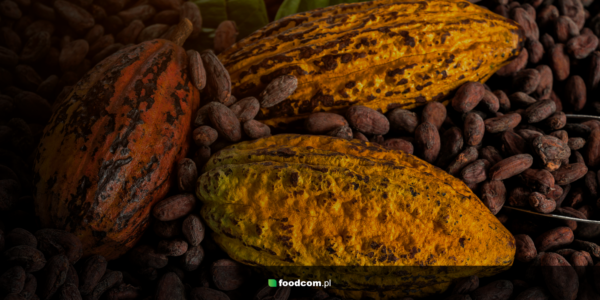- Cocoa mass is made by grinding roasted and shelled cocoa beans.
- From the cocoa mass, cocoa butter and cocoa powder can be obtained.
- The product is characterised by its intense taste and high nutritional value.
- Cocoa mass is used to make numerous chocolate products, dietary, cosmetic and pharmaceutical products.
Cocoa mass is a well-known intermediate product in the food industry that imparts an intense chocolate flavour to products. What exactly is cocoa mass, how is it made and where is it used?
Cocoa mass – what is it?
Cocoa mass, otherwise known as cocoa pulp, is nothing more than a paste made from roasted and shelled cocoa beans (Theobroma cacao) which have then been ground. It is also sometimes referred to as cocoa crumbs. It takes the form of a thick, dark brown paste with an intense, bitter, chocolatey smell and taste.
What is the composition of the cocoa mass?
Natural cocoa mass is largely composed of fat, which is typically 50-55%. Protein and carbohydrates make up about 12-16% of its composition respectively, while fibre makes up 16%. The water content is low, even below 3%. The product provides approximately 600 kcal per 100 g.
Cocoa mass also contains numerous minerals (magnesium, iron, zinc, potassium) and biologically active substances such as phenols, aldehydes, ketones, heterocyclic compounds and alkaloids. Of particular note are theobromine and caffeine, which have stimulating and regenerative effects. There are approximately 0.8% caffeine, 1.5% theobromine and 6% tannins in the composition.
Cocoa pulp has an acidic pH of 5-6. To neutralise the cocoa, the beans are alkalinised, resulting in a product such as alkalinised cocoa powder. It is characterised by a milder taste, darker colour and lower caffeine content.
Production of cocoa mass
Cocoa beans are harvested from the fruit of at least a few years old plants. In order to obtain them, the pulp must be separated from the seeds and then the beans dried. The next stage of production is to roast the seeds and remove their husks, which can then be used as an additive for animal feed. The shelled beans, especially their germ. are ground, resulting in cocoa mass.
This can be used directly as an intermediate product in the manufacture of food products, but is often subject to further processing. Cocoa butter, which is melted from the paste, is widely used in the confectionery and cosmetics industry. This process also yields dry beans which, after grinding, produce the cocoa powder we know so well. Cocoa powder is a product widely used in cooking.
Use of cocoa mass
Cocoa mass is mainly used as a basic ingredient in chocolate, but its potential use is much broader – it is used in both the food, health and cosmetic industries.
Food industry
The use of cocoa mass in the food industry is its widest area of use. Cocoa mass is the main ingredient in chocolate – both dark and milk chocolate and white chocolate. To make chocolate, the cocoa mass is simply formed into bars and cooled, but sugar, cocoa butter and milk powder are often added. In the production of white chocolate, cocoa mass rather than cocoa butter is used.
In the food industry, cocoa mass is also used as an ingredient in other confectionery products such as cakes, desserts, pralines, truffles, bars or in the production of ice cream, giving the products an intense chocolate flavour.
Cocoa mass is also used in culinary applications. It is an ingredient in drinks such as hot chocolate, drinking cocoa or chocolate milk drinks. It is also used in the preparation of exquisite desserts, toppings and chocolate sauces.
Other uses
Cocoa mass and cocoa fat are commonly used in the production of cosmetics. In the cosmetics industry, we can easily find products with cocoa in them: body lotions, creams, soaps and face masks. It is used in such products because of its nourishing and moisturising effects.
Such properties of cocoa also mean that it is sometimes used in the pharmaceutical industry. It can be added to various dietary supplements, e.g. for heart protection. It is also an ingredient in dietary and nutritionally enhanced products, such as energy bars.
Cocoa mass producers
Cocoa pulp producers are closely linked to the areas where cocoa grows. Cocoa is grown in tropical zones around the equator, in countries such as West Africa, South East Asia and Latin America.
The world’s largest cocoa producer is Côte d’Ivoire, which accounts for around 40% of global production. This is followed by Ghana and Indonesia. Large producers are also: Nigeria, Ecuador and Brazil – a historically significant producer.
Cocoa cultivation and processing, as well as the production of cocoa products, mainly involve companies from the USA and Europe, where the cocoa beans are exported. Well-known US cocoa companies are: Cargill, Archer Daniels Midland, Mars Inc. or Hershey’s. In Europe, mainly Swiss producers such as Barry Callebaut or Nestlé are well-known. Singapore’s Olam International also plays a major role in the global cocoa market. In Poland, one of the most trusted suppliers is Foodcom S.A..
Cocoa mass is a very important intermediate product for the food industry. The entire chocolate industry is based on the pulp and further products of its processing. Not only does it contain numerous nutrients, but it also has a pleasant, deep chocolate flavour. Despite the area of cocoa cultivation being restricted to certain climatic conditions, it is well known and used throughout the world.









